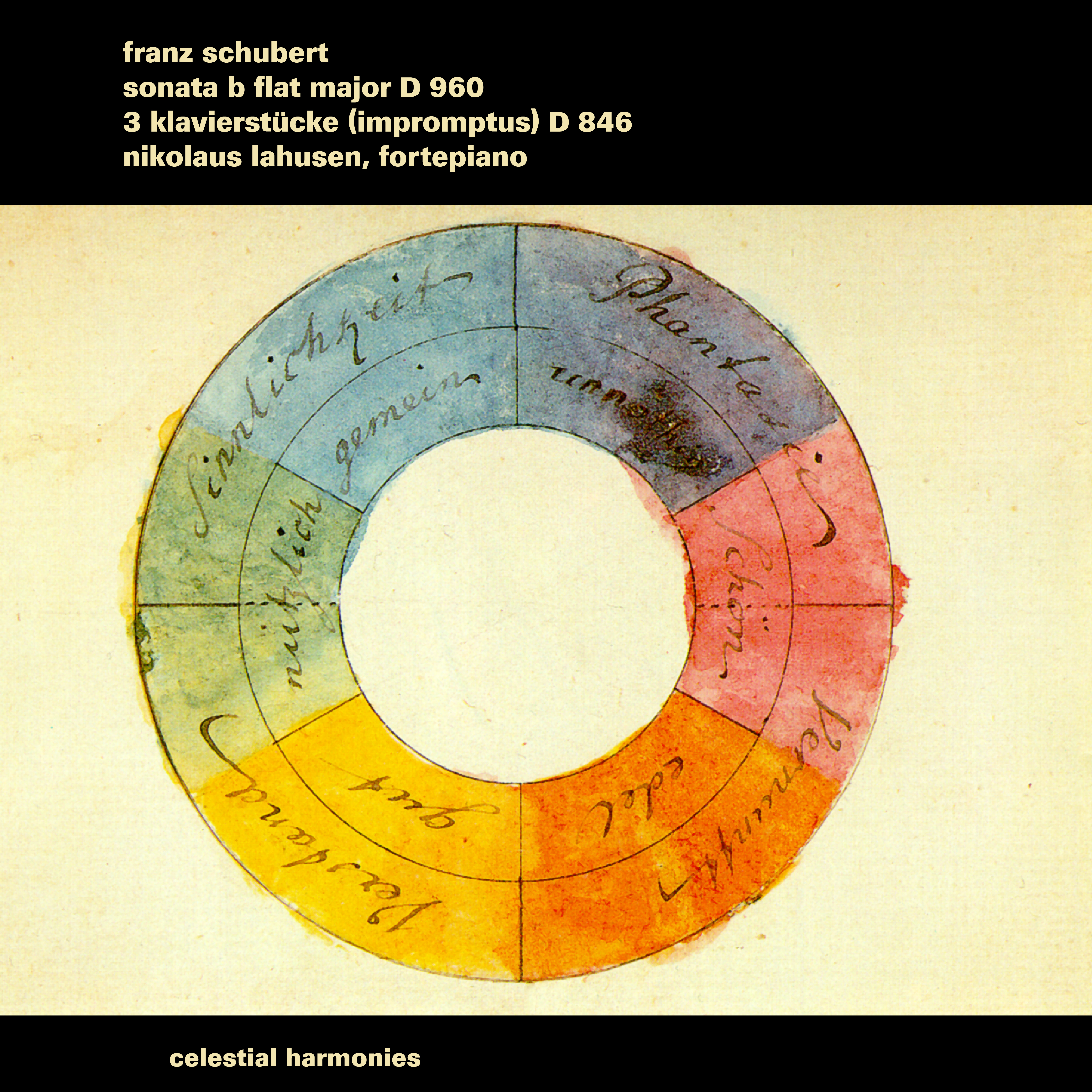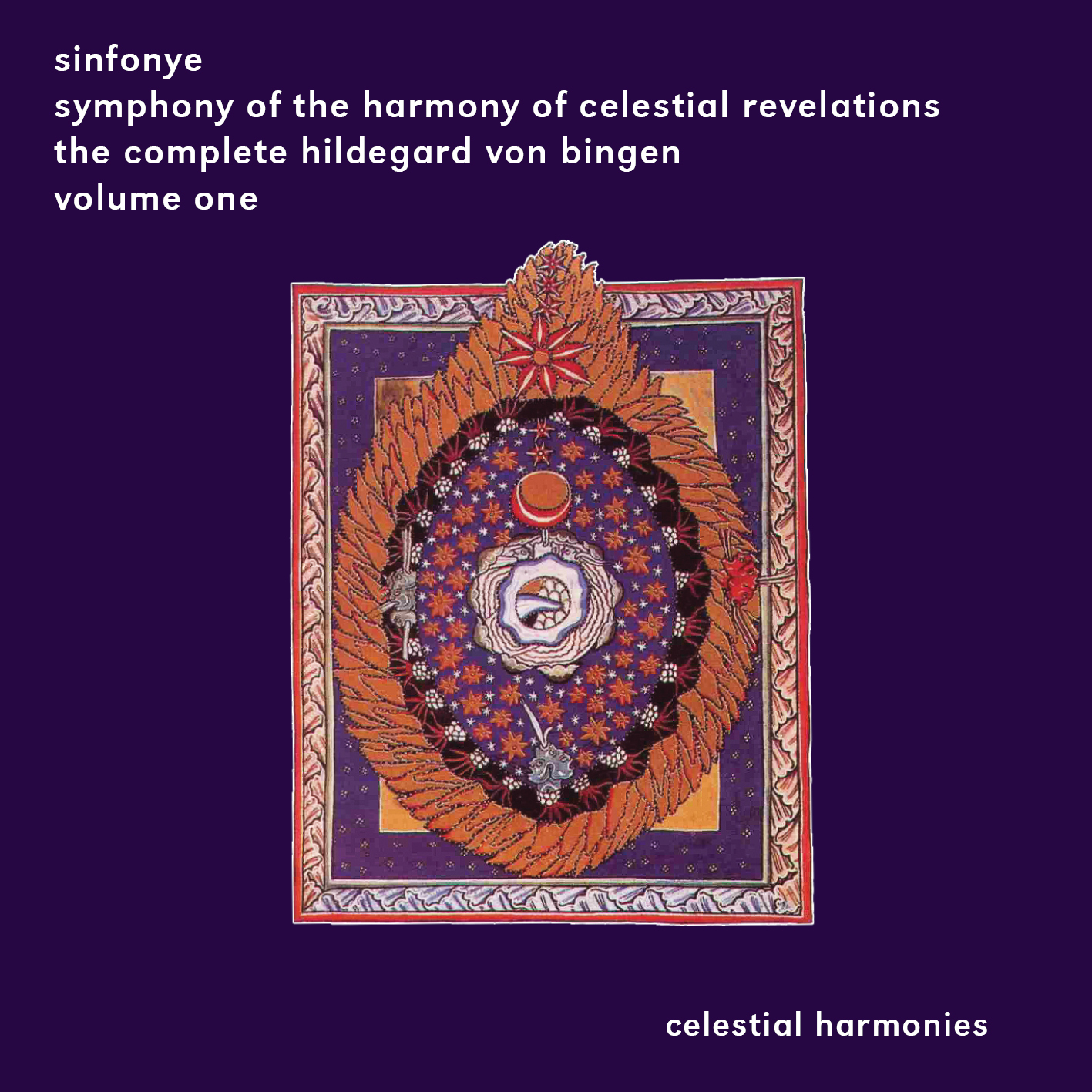
September 2001

 13195
FRANZ SCHUBERT: SONATA B FLAT MAJOR D 960/3 KLAVIERSTÜCKE
D 946 - NIKOLAUS LAHUSEN (2001 Winner
of the Preis der deutschen Schallplattenkritik [The
Annual Award of the German Music Critics])
13195
FRANZ SCHUBERT: SONATA B FLAT MAJOR D 960/3 KLAVIERSTÜCKE
D 946 - NIKOLAUS LAHUSEN (2001 Winner
of the Preis der deutschen Schallplattenkritik [The
Annual Award of the German Music Critics])
To ears accustomed to hearing Schubert's piano works played on modern
instruments, the experiment of encountering this music as the composer
might have intended can be revelatory. The Mexican–born German
pianist Nikolaus Lahusen sheds abundant light on Schubert's Sonata in
B flat major, D 960, and the Drei Klavierstücke, D 946,
as performed on a Hammerflügel built by Conrad Graf in Vienna around
1835 (and loaned for this recording from the Dutch collection of Edwin
Beunk).
Although the Graf fortepiano postdates Schubert's death by seven years,
it is the type of instrument on which the composer is likley to have
given the private première of his B flat Sonata less than two
months before he expired at the age of 31. The instrument's mellow,
sweet character and clarity in every sonic and contrapuntal situation
emphasises the music's intimacy, almost giving the listener the impression
of eavesdropping on an artistic confession. In the B flat Sonata, especially,
Schubert can be discerned exploring the rueful borders between life
and death , and the Graf's quick decay, tonal fluency and spectrum of
colours bring the score's bring the score's lyrical rêveries and
anguished outbursts into poignant focus.
Lahusen never sounds merely enamoured of the period instrument. He
is a Schubertian of forceful and sensitive personality savouring the
Sonata's quiet moments evan as he imbues phrases with the tension needed
to evoke the terror beneath the serenity. The Drei Klavierstücke
also benefit from Lahusen's ability to balance spacious shaping with
propulsive declamation. Celestial Harmonies, a recording company based
in Tucson, Arizona, that is devoted to environmental causes, captures
Lahusen and the Hamelflügel in close retropective—the ideal
aura for music that communicates with such expressive immediacy and
truth.
September 2001

 14200 BACH REGER (2 CD) -
FRANZ LEHRNDORFER
14200 BACH REGER (2 CD) -
FRANZ LEHRNDORFER
Here are two hard–to–find Bach and Reger records from the
1980s with organist Franz Lehrndorfer, recorded in co–production
with Bavarian Radio. They're now reissued as a 'two–fer' by Celestial
Harmonies. Why an American label includes booklet–notes in German
only is a total mystery. But there's nothing remotely unclear about
Lehrndorfer's Bach playing, especially in the two large works. The C
Major Toccata is lean, lithe and nimbly articulated, and the firmly
energetic Fugue boasts impressive pedal work, nearly as crisp and incisive
as Simon Preston's intelligent urbane traversal. I like the diversity
of registration Lehrndorfer brings to the six Schübler Chorales,
although one might argue that the chorale tunes are often too loud in
relation to the accompaniments (as in 'Wachet auf' and 'Meine Seele
erhebt den Herren' for example). Still, Lehrndorfer's Helmut Walcha–like
sobriety makes an attractive foil to the more propulsive and ravishingly
balanced Schübler set. And it's a joy to hear Lehrndorfer's
E major Toccata gain strength and energy in the Fugue as more stops
are added along the way, thanks in part to the characterful, plangent
sonorities of the Pfarrkirche Organ of St. Quirin, Tegernsee.
The much larger Eichstätt Dome organ, though, befits Max Reger's
densely chromatic and restlessly contrapuntal idiom. Likewise, the upfront,
transparent engineering helps clarify the murky bass rumblings at the
onset of the Op 52 No 2 Phantasie. Little, if any, competition stood
in Lehrndorfer's way when his accomplished and fluent Reger disc first
appeared in Europe more than a decade ago. But along came Rosalinde
Haas in the 1990s, with her standard–setting complete Reger organ
music cycle for Dabringhaus und Grimm. Point by point comparisons favour
Haas for greater overall fluency, faster tempos and rhythmic alacrity:
notably in the concluding fugues of the D minor Sonata and aforementioned
'Wachtet auf' phantasie. This is not to disparage Lehrndorfer's affinity
for and obvious, if less exultant, mastery of these works. All told,
a release worth investigating.
September 1999

 13127 SYMPHONY
OF THE HARMONY OF CELESTIAL REVELATIONS: THE COMPLETE HILDEGARD VON BINGEN,
VOLUME ONE - SINFONYE
13127 SYMPHONY
OF THE HARMONY OF CELESTIAL REVELATIONS: THE COMPLETE HILDEGARD VON BINGEN,
VOLUME ONE - SINFONYE
Favus distillans, Et ideo puelle, O tu illustrata, O vos angeli, Studium
divinitatis, O ignee Spiritus, O rubor sanguinis, O orzchis Ecclesia,
O Gloriosissimi lux vivens angeli, Rex noster promptus est, Deus enim
in prima muliere, De patria. Sed diabolius in invidia, Nunc gaudeant
materna viscera Ecclesia.
After Gothic Voices, with their Gramophone Award-winning CD
that launched the cult of Hildegard (Hyperion, 7/82), after the female
section of Sequentia, who further revealed the beauty of Hildegard's
seemingly unending melodic lines (Deutsche Harmonia Mundi, 5/95), after
the light and grace of a performance by Emily Van Evera, sadly obliterated
by modern instrumental overlay (Virgin Classics), after so many other
attempts at interpretation, here is one that catches the imagination
by the freshness and genuineness of its approach: Sinfonye, three mature
female singers together with the Oxford Girls' Choir, Stevie Wishart,
in her enthusiastic discovery of Hildegard has found fulfillment of
an earlier student ambition of hers to promote the musical genius of
women . She succeeds in putting Hildegard's music across, partly because
she has benefited from the experiments of others, but chiefly, I think
by her imaginative choice of singers, which includes quite young girls.
The tuneful, unsophisticated timbre of the youngest voices - as for
example, that of Vickie Couper in Deus enim in prima Muliere -
acts as a foil to the sturdy chest voices of the older women - which
have a quality of their own, somewhat akin to that of Hungarian folk
singers. Such contrasts seem to me to be typical of the whole Hildegardian
picture, Hildegard herself was made up of contrasts: she is ecstatic
and at the same time quietly tender; she can be passionate while maintaining
a sense of decorum; she is erotic but also chaste.
I could have done without the hurdy-gurdy; I could have dispended
with the drones and the improvised organum. What is left is an understanding,
a penetration of Hildegard's music which rarely comes through in other
interpretations. I am thinking particularly of the composer's portrayal
of the mystery of the incarnation in O tu illustrata and also,
particularly, of the remarkably sustained lines of ectasy in O vos
angeli - this extraordinary outpouring ranging over two octaves,
but which yet has shape and structure for all Hildegard's protestations
that she had never studied her art formally. Very highly recommended.
If contemporary music's hottest female property is gutsy
Grammy scooper Alanis Morissette, Hildegard von Bingen undoubtedly reigns
supreme in classics popularity.
Nobody should feel embarrassed that von Bingen has escaped their
attention; after all, she has not been with us since 1179.
However, in recent years she has become something of a patron saint
to the burgeoning early music movement.
Among this medieval genius's most devout followers is Stevie Wishart,
who in 1987 formed Sinfonye, an a capella ensemble dedicated
to exploring music sung, inspired or composed by women.
Volume 1 of a projected four-disc enterprise to record Hildegard's
complete output, Symphony offers some of the most beautiful
chants anyone could wish to hear.
|



